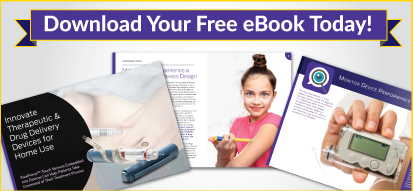Put the Patient First in Your Drug Delivery Device Design
People that suffer from medical conditions that require frequent therapeutic or drug treatment endure a lot of inconveniences. Adapting one’s lifestyle to accommodate a rigorous treatment schedule adds more frustration to an already difficult situation. This is why medical device design engineers are all faced with a difficult but noble task: to develop effective, minimally-invasive treatment technologies that help patients live a more normal life.
More and more patients with medical conditions ranging from arthritis to multiple sclerosis are electing to use home-use therapies -- like prefilled syringes or wearable auto-injectors -- that help them continue their treatment with less effort and fewer doctors’ visits. One commonality among most therapeutic & drug delivery devices are that they require a change in force to perform a function. Whether the force changes are made by the patient, or made automatically by the device, embedding force-sensing technology to capture and/or monitor these force impacts can play a major role in helping the patient take more control over their treatment process.
From a design engineer’s perspective, there are few force-sensing alternatives that can be integrated into a device without making it overly bulky, expensive, or requiring significant power to operate. However, FlexiForce™ touch sensors offer greater flexibility to help make therapeutic & drug delivery devices small, smart, and easier for the patient to use.
FlexiForce force-sensitive resistors can enhance drug delivery devices in 4 key ways:

|

|

|

|
| Monitor Device Performance | Improve Usability & Patient Preference | Ensure Treatment Delivery & Accuracy | Collect Actionable Data for Connected Devices |

